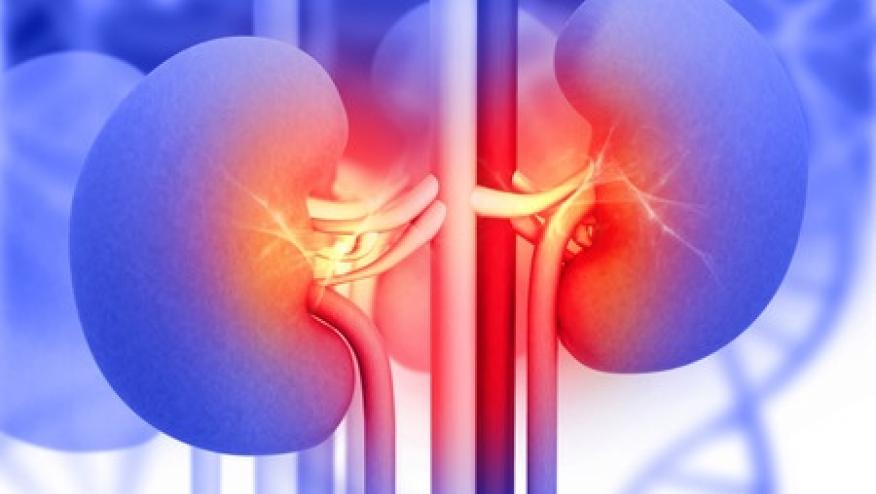Abatacept Misses in Lupus Nephritis Save

Dr. Richard Furie, MD, of Northwell Health in New York, presented the findings ofa large phase III trial of abatacept (Orencia) in lupus nephritis showing the agent failed to achieve a complete renal response.
Data presented at EULAR 2018 showed that at one year, a total of 35.1% of patients receiving abatacept achieved complete renal response, as did 33.5% of those randomized to placebo (P=0.73).
Abatacept inhibits T-cell activation through its effects on the CD86/CD28 pathway. A phase II study conducted several years ago failed to meet its primary endpoint, but a post-hoc analysis in which modifications were made to the endpoint did show a treatment effect, so sponsor Bristol-Myers Squibb (BMS) undertook a phase III trial that included 405 patients.
Participants were required to have had a biopsy within the previous 12 months showing proliferative disease with or without membranous disease, and had to have a urinary protein-to-creatinine ratio greater than 1.
At baseline, mean age was 33, mean protein-to-creatinine ratio was 3.78, mean serum creatinine was 0.93 mg/dL, and mean glomerular filtration rate (GFR) was 95 mL/min. Most patients had class IV disease, and about one-quarter had concomitant class III or IV disease plus a membranous component.
All patients received background mycophenolate mofetil (Cellcept) in dosages ranging from 1.5 to 3 g/day, as well as oral steroids. Two-thirds were on antimalarials and almost 90% were receiving ACE inhibitors.
Patients in the abatacept group received a loading dose of 30 mg/kg during the first four infusions and 10 mg/kg every 4 weeks thereafter through 2 years.
About 20% of patients dropped out in the first year and an additional 20% withdrew during the second year.
Complete renal response was defined as a urinary protein-to-creatinine ratio of less than 0.5, the estimated GFR had to be normal or no worse than 85% of baseline, no cellular casts were allowed, and the prednisone dosage had to be ≤10 mg/day by day 141.
On the secondary endpoint of response for patients with high baseline proteinuria, responses were similar, with 27% of abatacept-treated patients and 29.5% of placebo patients having renal responses.
"However, a provocative finding was seen on a Kaplan-Meier plot of time to first sustained renal response, which was the endpoint being met on two consecutive visits. Earlier and more robust responses were seen for that finding in the abatacept group," he said. These benefits were driven by changes in proteinuria, he noted.
As early as day 85 the adjusted mean change in urinary protein-to-creatinine ratio was -2.50 for abatacept and -2 for placebo, for an adjusted difference of -0.50 (95% CI -0.84 to -0.16). This was sustained at least until year 2, when the adjusted difference in the urinary protein-to-creatinine ratio was -0.41 (95% CI -0.79 to -0.03).
Additional findings included an increase of 5% to 8% in both groups in estimated GFR, and "profound effects" on serology, with notable changes in anti-dsDNA antibodies and C3/C4 markers.
There were 14 deaths, evenly divided between the abatacept and placebo groups. Serious adverse events occurred in 24% of the abatacept group and 19% of the placebo group during the first year, but in 6% of the abatacept group and 13% of the placebo group in year 2. More infections were seen in the abatacept group, and herpes zoster was seen in equal numbers of the active treatment and placebo patients.
"So the study failed to meet its primary endpoint of complete renal response at year 1, but there were some provocative findings that need additional analyses. I can tell you that there will be more analyses and presentations about these data, and BMS has not given up on lupus," he concluded.
The study was sponsored by BMS. Furie and co-authors disclosed multiple relevant relationships with industry including BMS.










If you are a health practitioner, you may Login/Register to comment.
Due to the nature of these comment forums, only health practitioners are allowed to comment at this time.